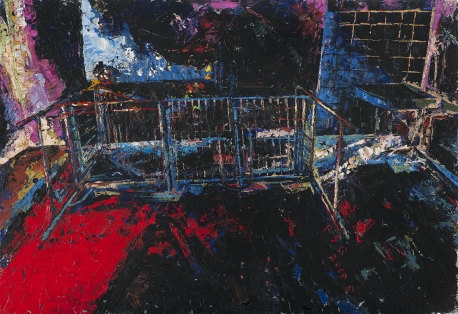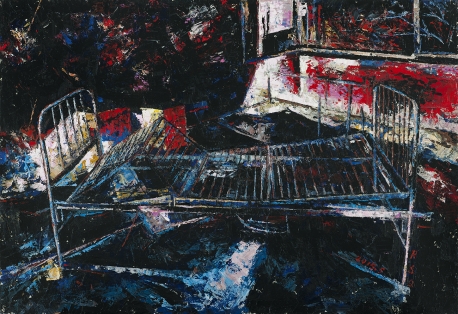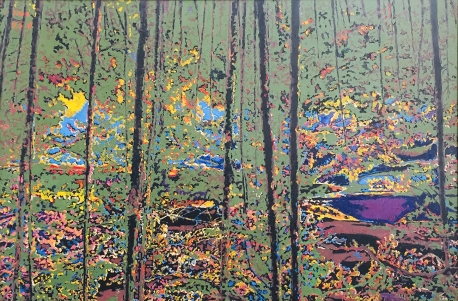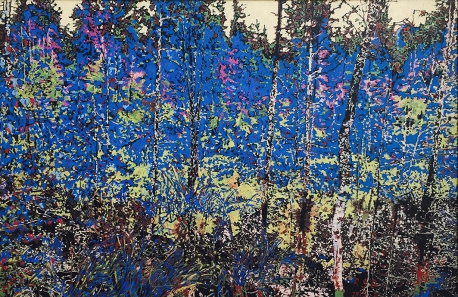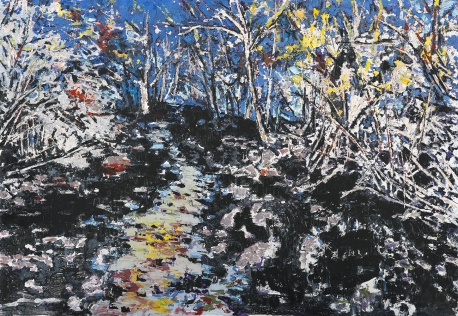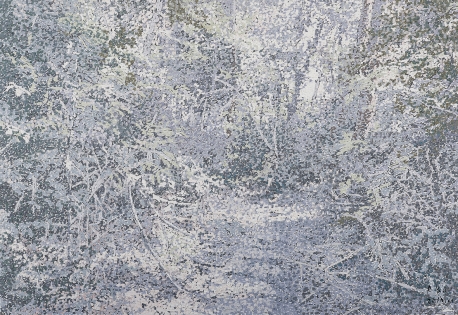再见,桃花源
- 展览时间:2016-05-20 - 2016-06-15
- 展览城市:北京-朝阳
- 展览地点:草场地艺术区327号进行时空间
- 策 展 人:艾艾
- 参展人员:
展览介绍
再 见,桃 花 源
文/艾艾
在中国的文化里,桃花源一直是文人雅士心中世俗喧嚣之外的一片净土,是内心对美好理想的一种隐喻,亦是自我宿命之外的精神建设。而在现实里谈论梦想,其实很难说再见是转身又见,还是永不相见。
自2010年之后,艺术家饶松青一直在创作《再见,桃花源》这批系列作品。在纷杂的景物中,他善于观察,把捕捉到的细节加以艺术化的提炼,将东方内敛、含蓄的文化特点结合对现实的思考融入到西方印象派点彩的创作技法当中,从作品的语境里能够感受到艺术家对于东方文化有着一种难以消磨掉的情结。在这种中西方的创作对话里,作品呈现出平和沉静的气质,层次感的画面中流露出诗歌般的人文气息。这全部得益于饶松青对人生、对社会的深切思考与自我内心的勤谨检视,但这种关照并非理性思考之下的产物、亦不是刻意摆出的一副文化姿态,而是源自内心的动融、一种习以为常的自然的梳理状态。由此,作品里所散发出来的温度反倒无需再用那些学术理论去为之附加。
在“艺术观念”泛滥以及过于依赖科技手段为主旨创作思路的当下,似乎每个人都想迅速成为这个时代的英雄,就必然会造成“不想当裁缝的司机不是好艺术家”这种荒诞的境遇,艺术的本质变得不再可爱,创作方式哗众取宠,艺术精神也由此逐渐显现出退化的趋势。这种艺术思潮兴起至今似乎却从未在饶松青的创作方式里泛起波澜,他一直走在探寻的路上,不懈地坚守着自己对艺术的原则,通过对客观事物及场景的描绘传达出主观上的思考,看似是对自然风景的描绘但其实已经抽离出了现实。从早期的《众生》、《一个人的风景》、《岸》等几个系列作品到如今的《再见,桃花源》,虽然作品风格有着较大的改变,但饶松青依旧注重视觉体验在绘画中的重要性,并始终将其作为创作的首要。
绘画,对于艺术家饶松青而言更多的则是作为一种文化方式的延伸,以及对于人类生存体验的深度挖掘之后的思考呈现。面对当下社会精神层面的日趋匮乏,怎样建立一个与时代相适应且正确的价值体系并在有限的绘画语言本体里去发现更多的可能性,或许也是艺术家饶松青要继续研究的课题。
Goodbye, My Land of Peach Blossoms
In Chinese culture, the land of peach blossoms is always a pure land beyond the hustle and bustle of the mundane world in the eyes of refined scholars. It is a metaphor for the inspiration for a bright ideal, as well as spiritual construction independent of self-destiny. If one talks about dream in reality, actually it is hard to say goodbye or never meet.
Artist Rao Songqing keeps working on the series of Goodbye, My Land of Peach Blossoms since 2010. He is good at observing and refining details capture from complicated sceneries in artistic technique, integrating the restraining and reserved traits of eastern culture combined with thoughts on the reality into the technique of creation of western impressionism stippling. From the context of his works we can feel that the artist holds indelible emotion to oriental culture. In this dialogue between China and the western world in creation, these works demonstrate gentle and quiet temperament, with layered frames showing humanity of poetry. All of these benefit from Rao Songqing’s deep consideration on life and society and meticulous self-inspection. However, this observation is not the result of rational thinking rather than a deliberate cultural posture. Instead, it is an emotional movement from the heart as well as a habitual, natural state of sorting. Thus, the temperature of these works requires no those adjunctive academic theories.
In a context where “artistic concepts” are allowed to spread unchecked and the idea of creation is way too dependent on technologies, it seems that everyone wants to be a hero of this ear in a short period of time. As a consequence, a grotesque situation that a driver who doesn’t want to be a tailor is not a good artist would be inevitable, the essence of art would be no longer lovely, modes of creativity tend to curry favor by claptrap, and artistic spirit begins to degenerate. These artistic ideological trends seem have never affected Rao Songqing’s mode of creation since their emergence. Rao is always on the road of searching by adhering to his own artistic principles. He conveys his subjective thoughts in descriptions of objective things and scenes, which seem to be depictions of natural landscapes but actually exist outside the reality. From early series of works such as All Living Creatures, The Scenery of A Person and The Shore to the current work--Goodbye, My Land of Peach Blossoms, Rao changes a lot in his style, but he still pays much attention to the importance of visual experience in painting and always give top priority to it in creation.
Painting is more of an extension to cultural form for artist Rao Songqing, as well as a presentation of in-depth exploration of human surviving experience. In face of increasingly severe mental deprivation in modern society, how to build a correct value system that keeps pace with the era and find more possibility in limited painting language ontologies may be subjects that Rao Songqing should further explore in future.

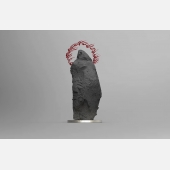 马文甲
马文甲 李秀勤
李秀勤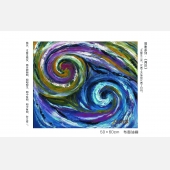 庞明璇
庞明璇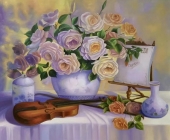 未知
未知 张大千
张大千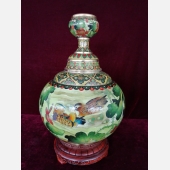 米振雄
米振雄 康蕾
康蕾 陆阳彬
陆阳彬





